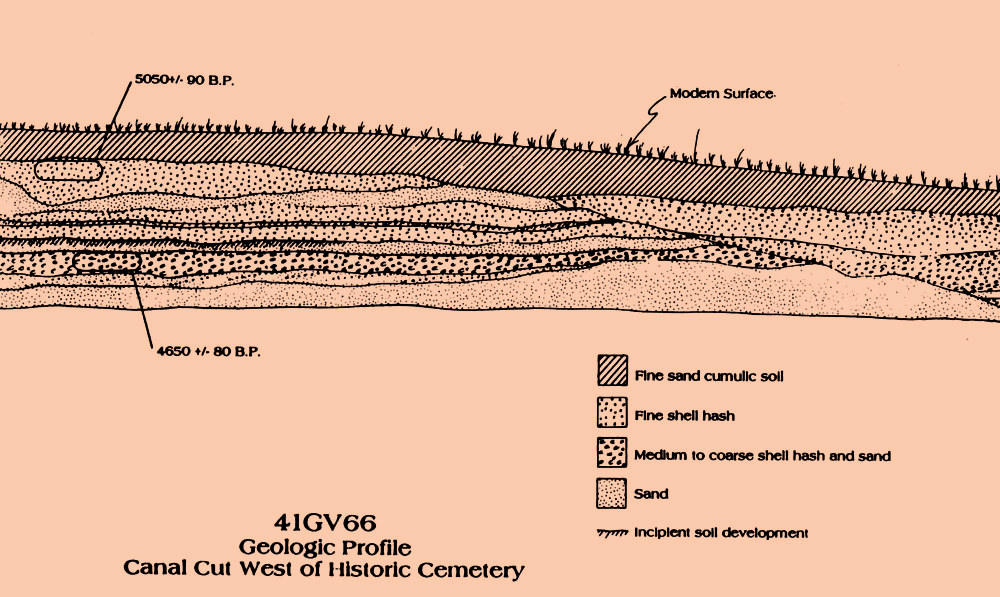
 |
| A geological profile from the west end of the Mitchell Ridge site shows that the core of Galveston Island was formed by deposits of fine sand and shell hash (pulverized seashells). These sediments were piled up by wave action and long-shore drift and then reworked and spread across the developing island by storm surges. Two radiocarbon dates obtained from samples of shell hash seem to show a stratigraphic reversal (the older date should be that from the lower deposit). This, however, is easily explained - some of the shells pulverized by wave action were from reworked older deposits. All of the human occupation of the site is found in the uppermost deposit, a fine cumulic (gradually accumulating) sandy soil some 40-60 centimeters (16-24 inches) in thickness. Adapted from Ricklis 1994, Figure 2.2. |